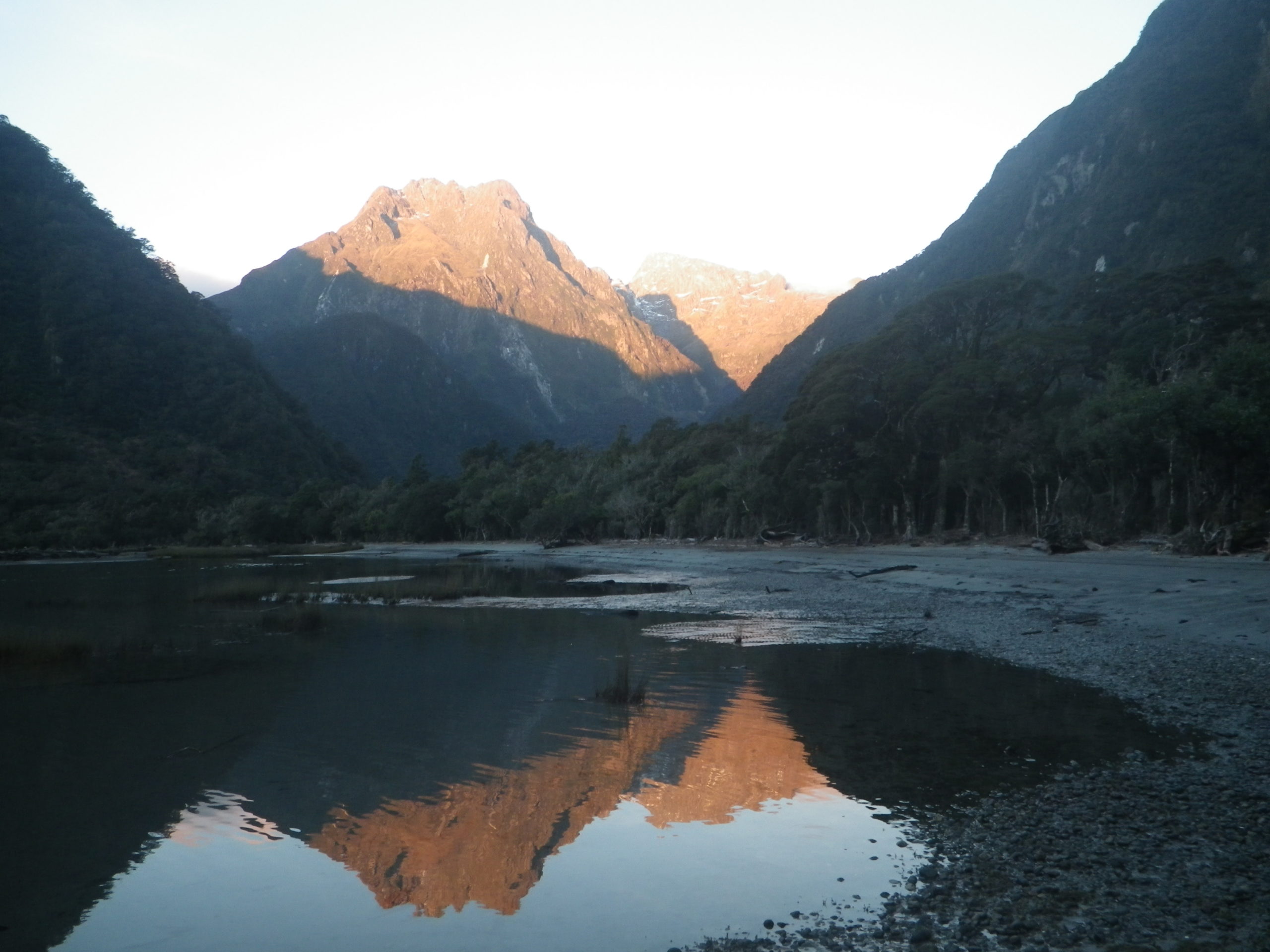Special Report)
With the imminent aerial poisoning of the Wet Jacket area in Fiordland, Dr Jo Pollard has written to Peter Shadie, Director, IUCN World Heritage Programme. Dr Pollard argues that the poisoning is not justified, and is inappropriate for the conservation of this World Heritage site. The operation, if it proceeds, would breach New Zealand’s obligations under the World Heritage Convention.
Dr Pollard refers the IUCN to the Department of Conservation application form completed by Contract Wild Animal Control for “Predator Control in the Wet Jacket Operational Area” (accessed online).
The 40,000 ha Wet Jacket area has never been poisoned before. It is home to at least 17 species of endangered birds as well as 25 other species of birds. Six species of lizard have been recorded including the rare Fiordland skink. The invertebrate fauna is described in the application to poison as “not fully explored” and “distinctive and important”.
Dr Pollard showed that the effects of the 1080 poison to be used are very poorly understood and there is cause for grave concern with DoC’s proposal. Only five species of birds were reported by DoC as reliably monitored through 1080 drops in other NZ wilderness areas. Figures show 9% of fernbirds and 12% of kea are killed.
Lacks Logic
The proposal lacks science and logic, according to Dr. Pollard. Its stated aim is to “protect flora and fauna susceptible to predation by rats, stoats and possums”, with bats, kiwi, parakeets, kea, kaka and Fiordland crested penguins all considered particularly in need of help. But these claims are not backed up by science. For example, Dr. Pollard described how it was previously concluded in scientific investigations that stoats and possums were not a problem to kea.
Short-tailed bats have previously been deemed relatively safe from predators, being fast and agile, fiercely mobbing intruders and choosing winter roosts that were inaccessible. Similarly, there was no direct evidence of significant predation of long-tailed bats.
Few Rodents
Due to low rodent densities, the Wet Jacket area poisoning was postponed in October 2019. The poisoning has since been promoted in the media as being needed to kill stoats, on the basis that local, heavily monitored kiwi chicks haven’t been surviving. Dr. Pollard noticed that the monitored kiwi weren’t even mentioned in the application to poison, also that there may be a very low stoat kill rate if there is a lack of poisoned rats for them to eat.
Dr. Pollard says the proposal is severely deficient in failing to mention negative ecological outcomes, such as the rebound in rat numbers that typically occurs within months.
Also scientists have pointed out that re-poisoning of rats is likely to become less and less effective due to the rats learning and developing physical tolerance. The Eglinton Valley, also in Fiordland, has just received its fourth aerial poisoning in five years. Mouse numbers also usually increase soon after aerial poisoning.
Stoat Explosion?
Landcare scientist Andrea Byrom warned in 2013 that these increases in rodents after aerial 1080 poisoning create ideal conditions for stoats. Another negative effect is that stoats switch to eating native birds if their rat prey is suddenly killed off.
DoC’s strong track record in misleading, pro-poisoning behaviour was also documented. Bird nests that are intensively monitored then fail are used to justify predator control.
“Nesting success” can increase when a bird population is culled (due to less competition) but DoC quotes nesting success figures as a positive response to poisoning. “Five minute bird counts” are used to assess bird numbers despite being very problematical, for instance bird calls may increase after poisoning as birds try to find their dead partners and family, or search for new company.
Dr. Pollard pointed out that Mrs Eugenie Sage, Minster of Conservation, claimed in a press release (11/4/20) that some Eglinton Valley birds are prospering due to DoC’s 1080 poisoning, however this is implausible and unproven.
Instead of the poisoning going ahead, Dr. Pollard suggested, a fraction of the resources could be used instead on careful, scientific studies of the biodiversity and ecology of the area before a management plan is decided upon.
Footnote: The letter to the IUCN can be found here: https://1080science.co.nz/open-letter-to-iucn-world-headquarters-government-poisoning-of-world-heritage-sites-in-nz/
,c> Fiordland – under siege by DOC armed with 1080
Photo Lewis Hore

